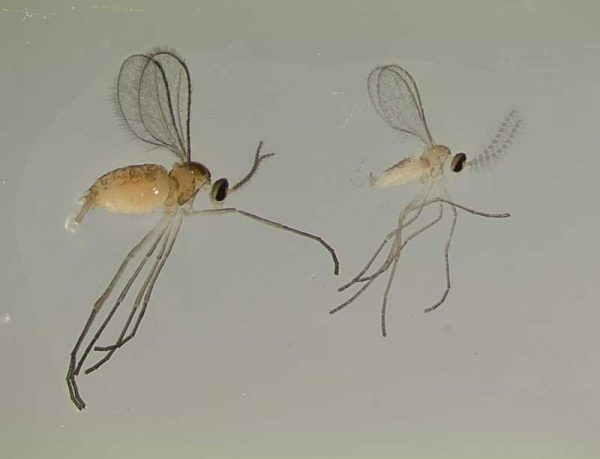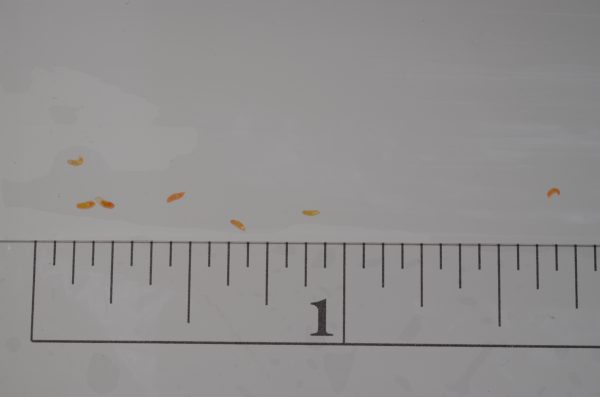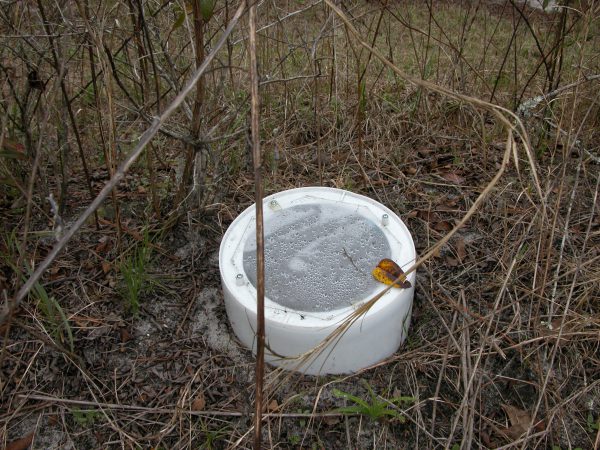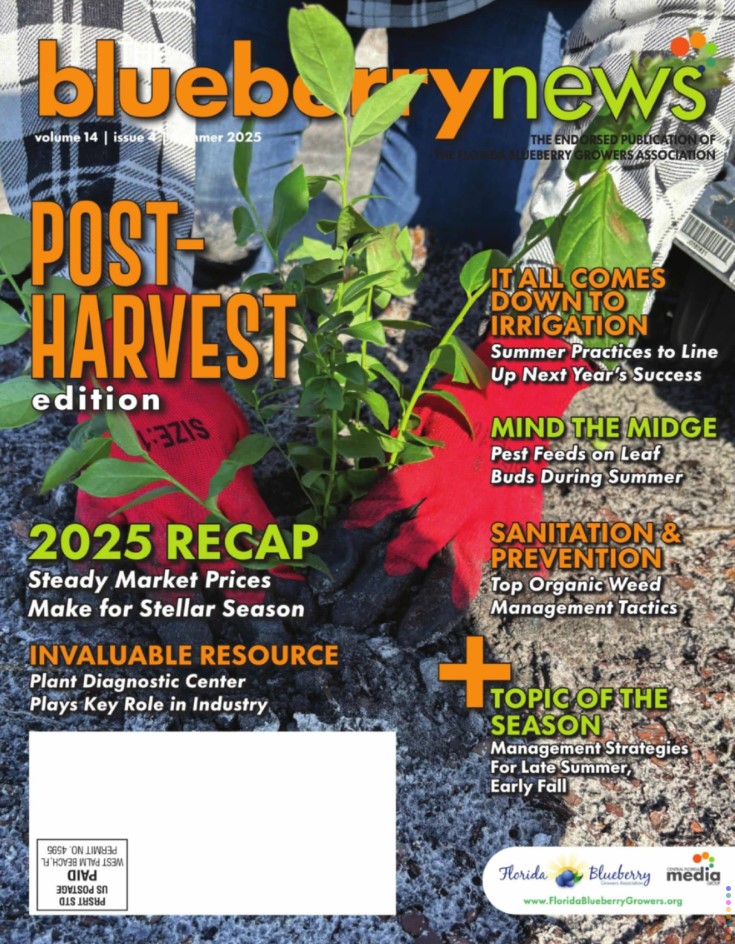Blueberry growers throughout the state of Florida experienced what appears to be high blueberry gall midge (BGM) damage during the spring 2018 growing season. The damage appears to be more pronounced in the Central Florida counties of Sumter, Citrus, Hernando, Lake, Hillsborough, and Polk, as well as north-central counties of Alachua, Bradford, Putnam, and Marion. Typically, gall midge will attack young developing floral and leaf buds and will cause floral buds to abort or fall off the bush resulting in poor flowering and ‘fruit set.’ With heavy gall midge damage to floral buds, there would typically be a lighter bloom since many of these buds will abort (e.g., only 1 or 2 florets may be seen instead of the usual 5 to 6, and therefore fruit clusters with only 1 or 2 fruit per cluster). It should be noted that damage to flower buds (browning, shriveling, and disintegration) can also be caused by freeze and application of hydrogen cyanamide. Poor fruit set and excessive dropping of undeveloped green fruit can be caused by poor pollination.
The adult blueberry gall midge is slightly smaller than a mosquito and becomes active when the temperature exceeds 60 o F. It appears that mild winters characterized by cool  and warm spells facilitate high midge activity. In central Florida, the adult fly becomes active in late fall (November to December) and peak activity appears to be in January and February. In north-central Florida the adults are active in November; however, the cool December and early January can negatively affect midge population. Peak activity in north-central Florida occurs in late February to March. The adult fly only lives for 2 to 3 days; females are larger than males, reaching a size of 2-3 mm (Fig. 1).
and warm spells facilitate high midge activity. In central Florida, the adult fly becomes active in late fall (November to December) and peak activity appears to be in January and February. In north-central Florida the adults are active in November; however, the cool December and early January can negatively affect midge population. Peak activity in north-central Florida occurs in late February to March. The adult fly only lives for 2 to 3 days; females are larger than males, reaching a size of 2-3 mm (Fig. 1).
A single female is capable of laying as many as 15 eggs per flower bud. The female forces its ovipositor (egg laying tubular organ) between the folds of developing leaves and flower buds to lay eggs. Newly laid eggs appear as tiny white cylindrical structures that are approximately 0.25 mm long. Eggs are best observed only with a 10X or higher magnification hand lens. Eggs hatch in 2 to 3 days into young larvae that are only 0.7 mm in length. The larva is translucent to white in color for the first 3 – 5 days, eventually turning orange when it matures in about 8 -10 days (Fig 2).
The larva passes through 3 instars and during this time it feeds on the interior of floral bud tissues inducing necrosis, brown lesions and bud abortion (Fig 3). Alternatively, when the larva feed on vegetative buds this results in misshapen and deformed leaves (Fig. 4). Tip-burn is also a common feature in fields where gall midges have fed heavily on vegetative buds. During harvest, midge population typically decreases, partially due to sprays for other invasive pests such as spotted wing drosophila (SWD) and blueberry maggot. There are also fewer resources (developing leaf and floral buds) that the female midge utilizes for egg-laying purposes. After the harvest season is completed and the pruning of southern highbush begins, there can be resurgence in the midge population. This population only affects  the vegetative buds in early summer and is generally lower than the spring and fall population. This phenomenon allows blueberry gall midge to be referred to as the cool season pest. Newly pruned blueberry bushes create flushes of folded leaves that adult females use for egg laying. There could be as many as 6 generations of midge per year in Florida (3 in the spring, 2 in the fall and 1 generation in early summer).
the vegetative buds in early summer and is generally lower than the spring and fall population. This phenomenon allows blueberry gall midge to be referred to as the cool season pest. Newly pruned blueberry bushes create flushes of folded leaves that adult females use for egg laying. There could be as many as 6 generations of midge per year in Florida (3 in the spring, 2 in the fall and 1 generation in early summer).
The key to managing midge populations is to conduct careful and early monitoring. It is important to use tools that will detect the midge early in the season. A white bucket trap (Fig. 5.) with a sticky Plexiglas top, placed under bushes in direct contact with soil or pine bark can detect adult midges when they begin to emerge early in the season. Clear sticky traps hung on the sides of the blueberry bushes can be used to monitor adults that are flying in the bushes (Fig 6). These traps are not available at Great Lakes IPM but it is worth checking with the company to determine if similar traps are available. Both of these traps are relatively simple to make. The bucket trap is essentially an inverted 5 gallon bucket with Plexiglas replacing a portion of the bottom. The Plexiglas faces upward towards the light, whereas the clear plastic trap (1ft X 1ft) is a sheet that is made from plastic that has tangle-foot (sticky glue) and a string or tie-wire to attach it to the bush.
The reduced-risk pesticide, Delegate® (Spinetoram) is used for midge management when pollinators are present in the field. Once you allow the Delegate® to dry for 3 hours it only has limited effects on bees. Delegate® will kill adult midges if it comes into contact with the adults; however the pesticide has a relatively short residual activity and will need to be re-applied weekly if pollinators are present. Furthermore, because adults live for such a short time (2-3 days) the chances of this pesticide being effective against midge is greatly reduced. Neonicotinoids such as Assail® and Admire Pro® (imidacloprid) perform better on midges but they cannot be used when pollinators are present during the spring.
These pesticides have systemic activity and can kill larvae that are hidden between the bud scales. Two relatively new insecticides that are that are fairly effective against midge are Exirel® with the active ingredient Cyazypyr®, and Movento® with the active ingredient Spirotetramat. These insecticides have systemic and translaminar activity that can target both the larvae in floral and leaf buds as well as the adults. Please read the label and follow the directions for rates, frequency of application and restrictions.
Dr. Oscar Liburd
University of Florida
Professor and Program Leader, Fruit and Vegetable Entomology






